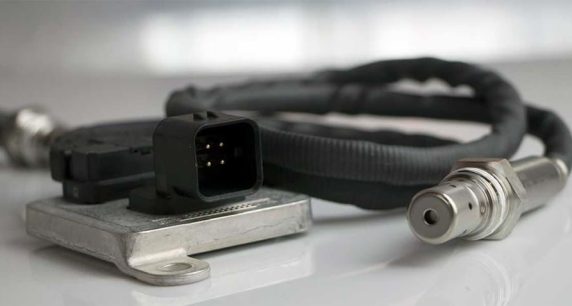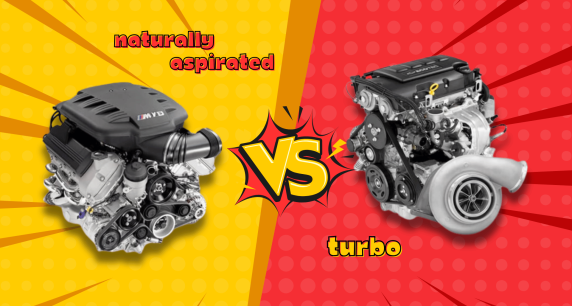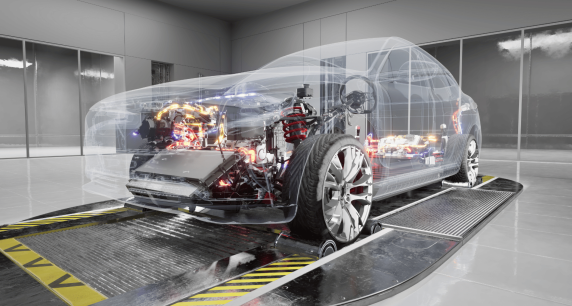NOx Sensor Failure Symptoms – An Inclusive Guide

It used to be commonplace for gases like methane, carbon dioxide, and nitrogen oxide to produce atmospheric pollution. Even some gases can destroy the ozone layer. As a result, the government continues to impose harsher pollution restrictions, which drives up the price of diesel automobiles.
Some NOx sensors, which are now built into some cars, alert the driver when emissions are not as clean as they should be. What happens when a NOx sensor malfunctions is a perplexing question that gets us to this?
We’ll talk about the signs, causes, diagnosis, and solutions for NOx sensor failure here. Let’s first examine what it is, though.
WHAT ARE NOX SENSORS?
NOx sensors, as their name suggests, are tools for measuring and computing the concentration of nitrogen oxides in exhaust gases. Nitrogen oxide levels in exhaust gases indicate whether there is enough oxygen available for burning. This helps ensure that the catalytic converter is working properly.
Their main job is to lessen dangerous exhaust by-products and maintain a secure atmosphere. What transpires if a NOx sensor malfunctions, you may be wondering? The powertrain control module will turn on the dashboard’s check engine light as a result of this sensor. Additionally, you can encounter weak acceleration, low engine power output, and poor gas mileage.
NOx sensors are available in a variety of styles, and they differ from vehicle to vehicle. DFP, turbocharger, SCR catalyst, and upstream NOx sensor from the exhaust catalyst may be present in older automobiles.
Both upstream and downstream NOx sensors are standard on modern automobiles. The engine control module receives the data after they measure the exhaust emissions. How much fuel should be injected into the combustion chamber is determined by the ECM.
The exhaust pipes are equipped with the upstream and downstream NOx sensors. They operate differently and provide various advantages. The downstream sensor computes the NOx emissions from the SCR catalyst while the upstream sensor detects the NOx emissions from the engine.
HOW DOES A NOX SENSOR WORK?
We can clearly understand how it functions if we can determine what a NOx sensor in a diesel vehicle performs.
A NOx sensor is a part of an SCR system that calculates how much NOx is present in an exhaust system. This enables the SCR to determine the ideal urea or ammonia concentration for higher fuel efficiency and less hazardous emissions into the atmosphere.
Some NOx sensors track the mass of exhaust flow in addition to monitoring the concentration of nitrogen oxides in the exhaust stream.
Modern automobiles include advanced NOx sensors that contain some substances that react to nitrogen oxides. Catalysts are these substances, which are typically produced using titanium oxide, activated carbon, and other base metals.
These substances transmit a voltage that is linked to the concentration of nitrogen oxide. The voltage increases as the amount of nitrogen in the exhaust stream increases.
Less sophisticated NOx sensors monitor the exhaust gas, remove the oxygen, and measure the NOx content. How can I tell whether my NOx sensor is damaged, then?
NOX SENSOR FAILURE SYMPTOMS
Like other car sensors, NOx sensors can fail. Whether you’re searching for NOx sensor failure symptoms on DD15 engines or BMW NOx sensor failure symptoms, here are the key signs you should watch out for.
HIGH FUEL CONSUMPTION
The auto computer could not know how much air and fuel to mix properly if the NOx sensor malfunctions and is unable to provide accurate information to the engine management software regarding the air-fuel ratio.
In some circumstances, the powertrain control module will respond by compensating by blending extra fuel to guarantee optimum engine performance. This fuel mixture is referred to as rich.
Your Cummins’ poor fuel economy could be caused by a malfunctioning Cummins NOx sensor. It’s significant to remember that poor gas mileage can result from other issues.
ROUGH IDLING
Rough or unpredictable idling is one type of frequent NOx sensor failure in Mercedes and other automobiles. When the engine is running, the fuel injectors send a precise amount of gas into the combustion chamber. The DME is in charge of managing this electronically. However, faulty NOx sensors result in inconsistent, harsh, or unstable idling.
ERRATIC ACCELERATION
Uneven or erratic acceleration is a common sign of a lousy NOx sensor. Here’s why; the engine control unit will compensate for the inappropriate reading by the sensor by using more fuel. In return, this will cause the vehicle to jerk when you depress the gas pedal.
ENGINE MISFIRE AND SOOT BUILD-UP
An engine’s misfiring can be caused by a number of things. However, a sudden engine misfire could indicate a broken NOx sensor. When there is insufficient oxygen present during burning, this occurs.
Due to the platinum that is present in NOx sensors, which helps to eliminate hazardous nitrogen from exhaust by-products, they are one of the most expensive parts of the exhaust system.
Higher emissions from a bad NOx sensor will have an impact on the catalytic converter. The catalyst is harmed, rendering it incapable of controlling emissions. Additionally, soot build-up may result from this. You are aware of what this entails, of course. It will result in the emission test failing.
CHECK ENGINE LIGHT
Under the hood, the NOx sensor is off, but when it malfunctions, it can turn on the engine check light. The check engine light, however, might be activated by the automobile computer for a number of reasons. Consequently, you shouldn’t assume that an engine warning light indicates a bad NOx sensor.
To determine the true reason of the light, scan the car with a diagnostics tool. Drive down to a mechanic’s shop for a professional inspection if you don’t have this tool.
What can cause a NOx sensor to malfunction after seeing the symptoms?
WHAT CAUSES NOX SENSORS TO FAIL?
Some factors can cause a NOx sensor to fail. Here are the probable causes of NOx sensor failures.
Soot build-up: Given the position of these sensors, it is not surprising that smog can harm them. Although soot accumulation is a symptom of a subpar NOx sensor, it is also a typical cause.
Burnt or damaged cables: The malfunction of the NOx sensor may be caused by a burnt or damaged wiring harness. A virtual inspection in this situation will identify the offender.
The NOx sensor may not necessarily need to be replaced. It’s possible that the internal connectors used to measure the NOx level are broken.
These are the typical ones you should be aware of, however there may be others. You might only require a visual examination to identify the source of the NOx sensor failure.
FINAL WORDS
You’ll have to admit that today’s cars are rather pricey and sophisticated. When issues like subpar NOx sensors arise, nobody wants to spend his hard-earned money.
Because of this, we have emphasized the signs of NOx sensor failure, solutions for them, and other significant issues. Make sure you are competent enough to perform any repairs on your vehicle before moving on. If not, get assistance from a specialist.



